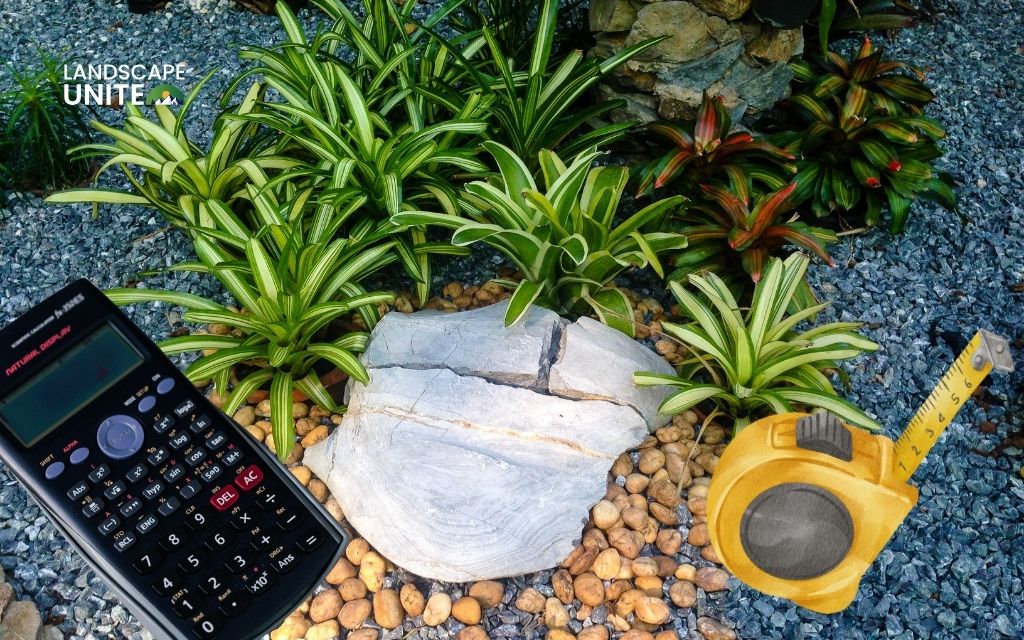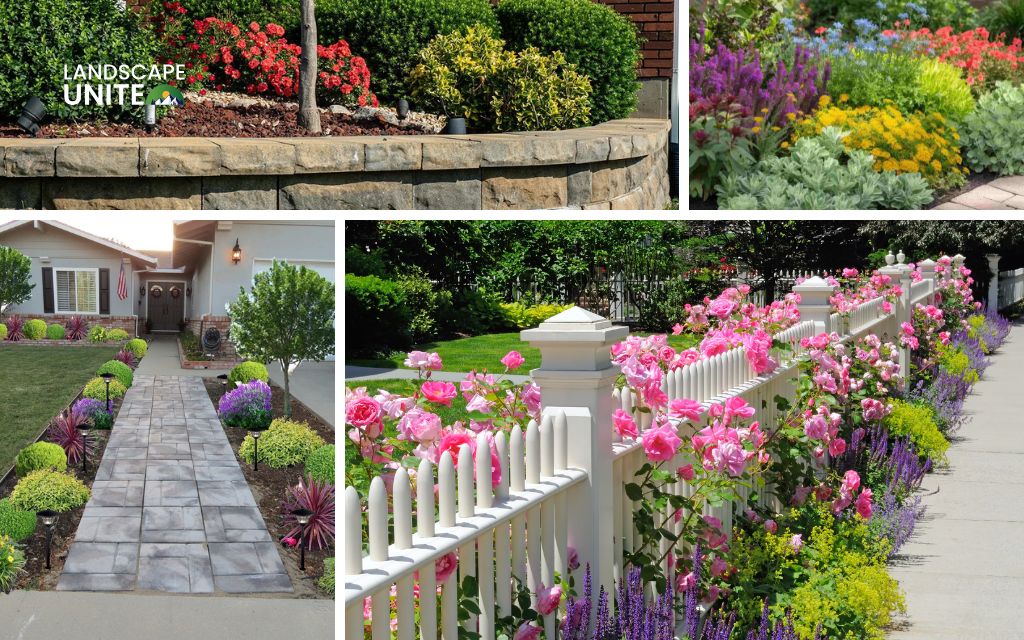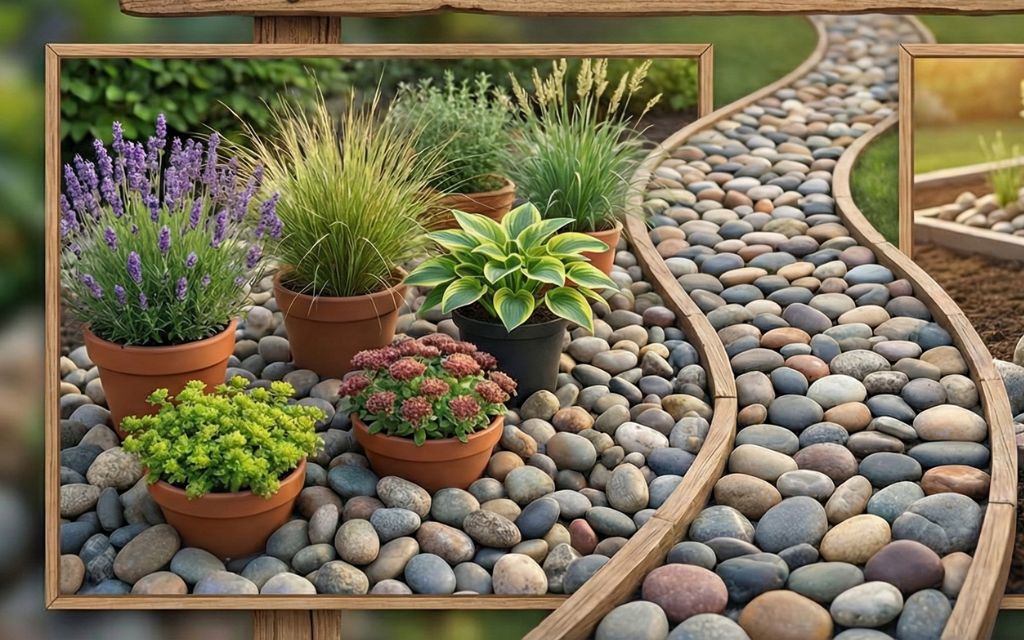Do you love your beautiful garden but struggle with keeping your dog away from those carefully planted flower beds? You’re not alone. Many pet owners face this exact dilemma daily. The good news? You can protect your plants while keeping your furry friend happy and safe when learn how to keep dogs out of flower beds with 8 pet-friendly solutions in this blog.
Quick answer: Use a combination of physical barriers like low fencing and natural deterrents such as citrus scents or vinegar sprays. This approach creates clear boundaries while discouraging dogs from entering your flower beds naturally.
Dogs naturally gravitate toward soft soil and interesting scents in flower beds, while gardeners want to maintain healthy, beautiful plants. This guide provides 8 humane, effective solutions that balance both needs perfectly.
Why do dogs get into flower beds?
Understanding your dog’s motivation helps you choose the right deterrent strategy. Dogs venture into flower beds for several reasons:
- Digging instinct: Cool, loose soil feels great under their paws, especially during hot weather. Underground creatures like moles or grubs also attract their attention.
- Territory marking: Dogs mark their territory through scent, and flower beds provide new areas to claim as their own.
- Chasing prey: Insects, birds, and small animals frequently visit gardens, triggering your dog’s natural hunting instincts.
- Lack of boundaries: Without clear visual or physical barriers, dogs don’t understand which areas are off-limits.
- Boredom or attention-seeking: Dogs may dig or explore restricted areas when they need more mental stimulation or want your attention.
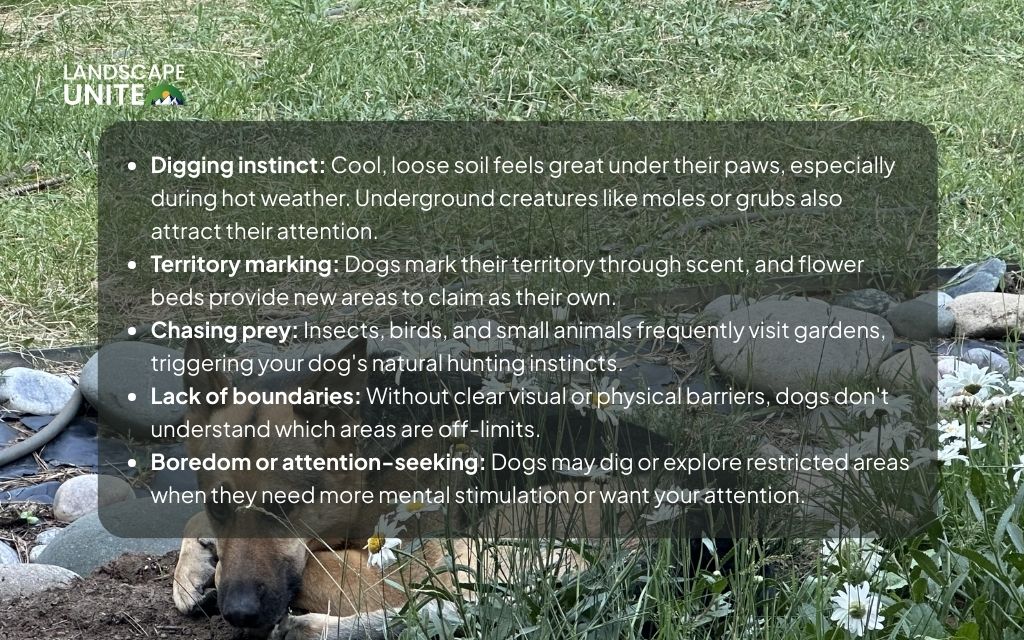
8 effective and pet-friendly solutions
1. Physical barriers: fencing and edging
Installing low garden fencing creates the most reliable way to keep dogs out of flower beds. A fence height of 18-24 inches works effectively for most dog breeds.
Best options include:
- Decorative metal garden edging
- Wooden picket-style borders
- Wire mesh panels for temporary protection
- Stone or brick raised bed walls
For smaller dogs or puppies, even 12-inch barriers often provide sufficient deterrence. Larger breeds may require taller fencing or additional deterrent methods.
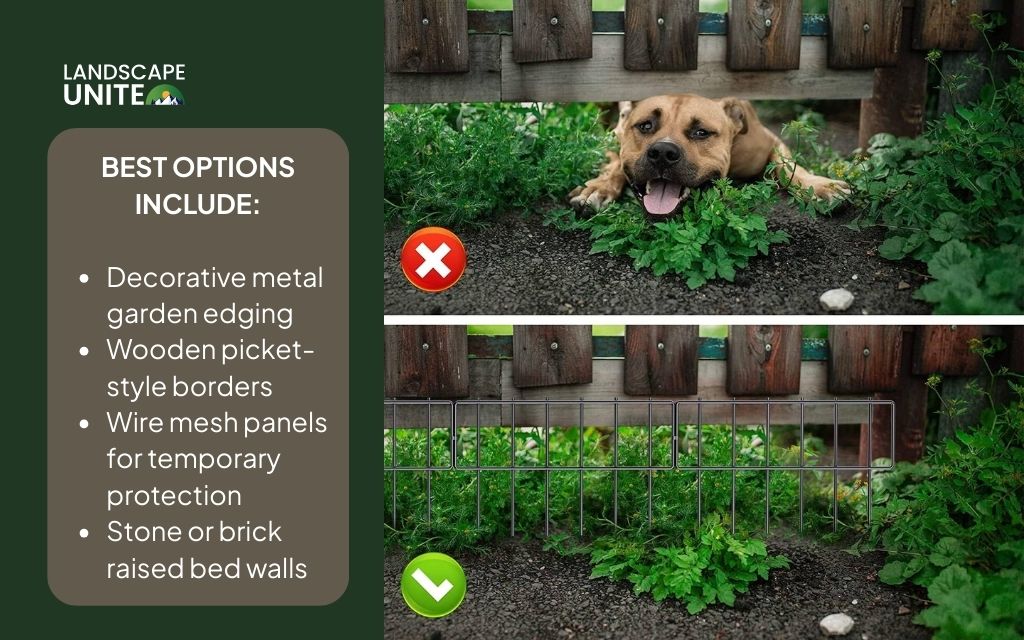
2. Create defined dog paths and play zones
Smart landscape design gives dogs appropriate areas to explore while protecting your flower beds. Designate specific zones where your dog can safely play and investigate.
Design ideas:
- Install pea gravel or mulch pathways throughout your yard
- Create dedicated digging areas filled with sand or loose soil
- Use stepping stones to guide dogs around flower beds
- Plant dog-friendly ground cover in play zones
Dogs prefer stable, clearly defined paths over soft flower bed soil. Training your pet to use these designated areas takes patience but delivers long-term results.
3. Use dog-safe deterrent sprays
Commercial and homemade deterrent sprays help keep dogs away from flower beds without causing harm. These products work by creating unpleasant scents that dogs naturally avoid.
Safe options include:
- Citrus-based commercial repellents
- Diluted white vinegar spray (1 part vinegar to 3 parts water)
- Essential oil blends with rosemary or eucalyptus
- Apple cider vinegar mixed with water
Reapply these sprays after rain or watering. Always test on a small plant area first to ensure no damage occurs to your flowers.
4. Plant dog-repelling flowers and herbs
Certain plants naturally deter dogs while adding beauty and functionality to your garden. These botanical barriers provide ongoing protection without daily maintenance.
Dog-repelling plants:
- Lavender: Pleasant for humans, overwhelming for dog noses
- Rosemary: Strong scent dogs dislike, useful in cooking
- Marigolds: Bright flowers that repel dogs and many insects
- Citronella grass: Natural mosquito deterrent with dog-repelling properties
- Rue: Extremely effective but requires careful handling
Plant these around flower bed perimeters or intersperse them throughout your garden for maximum effectiveness.
5. Mulch smartly to deter digging
The right mulch choice can significantly reduce your dog’s interest in flower beds. Dogs prefer soft, easy-to-dig surfaces and avoid rough, unstable textures.
Dog-deterring mulch options:
- Pine cones (uncomfortable to walk on)
- Bark nuggets (large pieces dogs can’t easily move)
- Crushed stone or gravel
- Rose bush trimmings (prickly but safe)
Avoid these dangerous mulches:
- Cocoa mulch (toxic if ingested)
- Small wood chips (choking hazard)
- Cedar mulch (can irritate sensitive dogs)
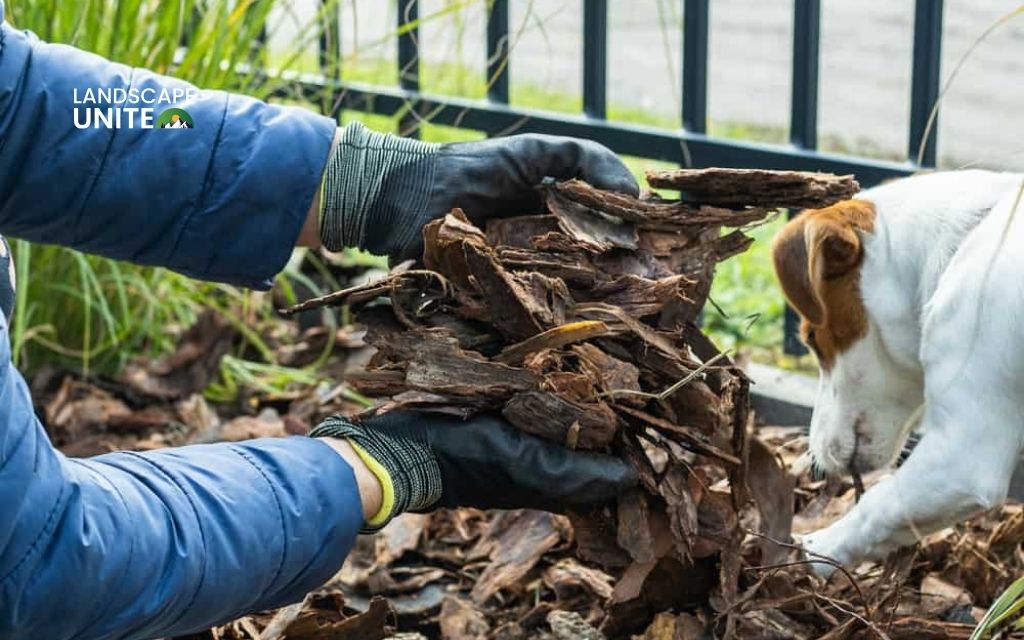
6. Motion-activated solutions
Technology offers hands-free protection for your flower beds through motion-activated devices. These tools startle dogs away without causing harm or requiring your constant supervision.
Popular options:
- Motion sprinklers: Spray water when detecting movement
- Ultrasonic devices: Emit high-frequency sounds dogs dislike
- Solar-powered alarms: Environmentally friendly with battery backup
- LED light systems: Flash bright lights to deter nighttime activity
Position these devices strategically around flower bed edges for maximum coverage while ensuring they won’t accidentally trigger on family members.
7. Training and positive reinforcement
Combining physical deterrents with proper training creates lasting behavioral change. This approach takes time but provides the most reliable long-term solution for keeping dogs out of flower beds.
Training techniques:
- Leash walk your dog around the yard, redirecting away from flower beds
- Reward with treats when your dog voluntarily avoids restricted areas
- Use consistent verbal commands like “leave it” or “no dig”
- Practice regular yard training sessions during different times of day
Consistency is crucial for success. Every family member should use the same commands and reward system.
8. Temporary barriers during planting or recovery
New plantings and recovering flower beds need extra protection while plants establish strong root systems. Temporary barriers provide intensive protection during vulnerable periods.
Temporary solutions:
- Collapsible wire pens around individual plants
- Mesh domes or cloches for seedlings
- Chicken wire laid flat over soil (remove once plants grow)
- Portable fence panels that move as needed
Remove these barriers gradually as plants mature and your dog learns to avoid the area through other deterrent methods.
Common mistakes to avoid
Even well-intentioned dog owners can make errors that worsen flower bed problems or endanger their pets.
Harmful deterrents to avoid:
- Mothballs (toxic and ineffective)
- Pepper sprays (can injure eyes and nose)
- Sharp objects like nails or glass
- Toxic chemicals or pesticides
Ineffective approaches:
- Yelling or punishment after damage occurs
- Hoping the problem resolves itself
- Using only one deterrent method
- Ignoring breed-specific digging tendencies
Better alternatives:
Focus on positive reinforcement, multiple deterrent strategies, and understanding your individual dog’s motivations.
Professional landscaping solutions
Sometimes DIY methods need professional enhancement. Experienced landscapers can design comprehensive solutions that integrate seamlessly with your existing garden while effectively managing pet behavior.
Professional services might include custom fencing installation, irrigation system modifications, or specialized plant selection based on your specific dog breed and garden conditions. For complex situations or valuable landscape investments, consulting with experts ensures optimal results.
Maintaining long-term success
Keeping dogs out of flower beds requires ongoing attention and occasional strategy adjustments. Seasonal changes, new plants, or changes in your dog’s behavior may require modified approaches.
Maintenance tips:
- Refresh deterrent sprays weekly or after heavy rain
- Inspect barriers regularly for damage or gaps
- Continue positive reinforcement training even after initial success
- Adjust strategies as puppies grow or senior dogs develop new habits
Monitor your flower beds regularly and address problems quickly before they become established patterns.
Conclusion
Successfully keeping dogs out of flower beds combines prevention, training, and thoughtful garden design. Pet-friendly gardening focuses on creating harmony between your dog’s natural instincts and your gardening goals rather than constant conflict.
The most effective approach uses multiple strategies working together. Physical barriers provide immediate protection, while training and deterrents create lasting behavioral change. Natural repellent plants add beauty while serving a practical purpose.
With patience and the right combination of methods, you can enjoy both a thriving garden and a happy, well-behaved dog. Remember that every dog is unique, so be prepared to adjust your approach based on what works best for your specific situation.
Want more expert gardening and landscaping tips? Subscribe to the Landscape Unite blog for regular updates on creating beautiful, pet-friendly outdoor spaces. Visit Mile High Lifescape for professional landscaping solutions tailored to your specific needs and discover more helpful posts on our blog for ongoing garden inspiration.
FAQs about how to keep dogs out of flower beds
How to stop a dog from digging in flower beds?
Combine physical barriers like low fencing with deterrent sprays and coarse mulch. Reinforce with positive training by rewarding your dog for staying away from restricted areas.
Will coffee grounds keep dogs out of flower beds?
Coffee grounds sometimes deter dogs but aren’t reliable long-term. Used coffee grounds can also harm plants by altering soil pH and may be dangerous if dogs ingest large amounts.
How to stop a dog from pooping in flower beds?
Use consistent training with positive reinforcement combined with physical or scent deterrents. Clean up accidents immediately and redirect your dog to appropriate bathroom areas.
How tall should a flower bed fence be to keep dogs out?
Most dogs respect 18-24 inch barriers. Smaller breeds often stay out with 12-inch edging, while large dogs may need 30-inch fencing or additional deterrent methods.
Will coffee grounds hurt my flowers?
Yes, excessive coffee grounds can alter soil pH levels and potentially stunt plant growth. Use sparingly if at all, and consider safer alternatives like citrus peels or commercial deterrent sprays.
